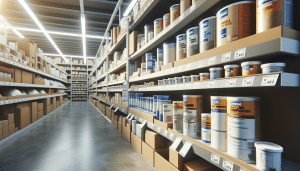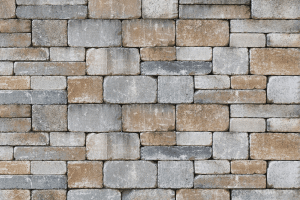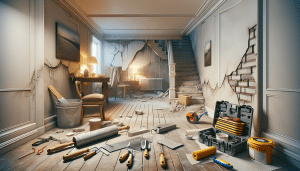When it comes to drywall finishing, the choice of technique can dramatically influence the overall look and feel of your interior space. Whether you prefer a sleek and modern appearance, subtle texture, or intricate patterns, there are various drywall finishing techniques to consider. In this article, we’ll explore the three primary categories of drywall finishing—smooth, textured, and patterned—and help you decide which one suits your style and project needs.
Smooth Finish
Smooth drywall finishing is the epitome of simplicity and sophistication. It involves creating a flat, seamless surface without any visible texture or patterns. Smooth walls and ceilings are a popular choice for contemporary and minimalist interior designs. The absence of texture allows for a clean, elegant look that complements a wide range of decor styles.
Pros:
- Modern and timeless appearance
- Easy to clean and maintain
- Versatile, as it pairs well with various design elements
Cons:
- Prone to showing imperfections in the drywall
- Requires a high level of skill for a flawless finish
Textured Finish
Textured drywall finishing introduces surface texture to your walls and ceilings, adding depth and character to your space. There are various texture patterns to choose from, such as orange peel, knockdown, skip trowel, and more. Texture can help conceal minor imperfections in the drywall and create a visually interesting backdrop.
Pros:
- Camouflages surface imperfections
- Adds visual interest and dimension to the room
- Can complement rustic, traditional, or transitional decor styles
Cons:
- May be challenging to clean
- Can be more difficult to paint than smooth surfaces
Patterned Finish
Patterned drywall finishing takes customization to the next level by incorporating intricate designs or patterns directly into the drywall. This technique allows for endless creative possibilities, from geometric patterns to decorative motifs. Patterned finishes are often used as accent walls or to create unique focal points in a room.
Pros:
- Offers endless design possibilities
- Creates a one-of-a-kind look
- Ideal for making a design statement
Cons:
- Requires advanced skill and precision
- May not be suitable for every room or design theme
Choosing the Right Finish
Selecting the right drywall finishing technique depends on your personal preferences, the style of your space, and the project’s purpose. Consider the following factors:
- Design Style: Determine whether your space leans towards modern, traditional, rustic, or eclectic design. Your chosen finish should align with the overall style.
- Room Function: Consider the function of the room. For example, a smooth finish may be suitable for a formal living room, while a textured or patterned finish could work well in a creative studio or bedroom.
- Maintenance: Think about the ease of maintenance. Smooth finishes are typically easier to clean, while textured and patterned finishes may require more effort.
- Budget and Skill Level: Keep in mind your budget and the expertise required for each finishing technique. Patterned finishes, in particular, may demand a high level of skill and investment.
In conclusion, your choice of drywall finishing technique—smooth, textured, or patterned—can greatly impact the overall aesthetics and atmosphere of your space. Consider your design preferences, room function, maintenance requirements, budget, and skill level when making your decision. Whichever finish you choose, it’s essential to enlist the expertise of professionals like Utah Drywall & Repair to achieve the desired result.




